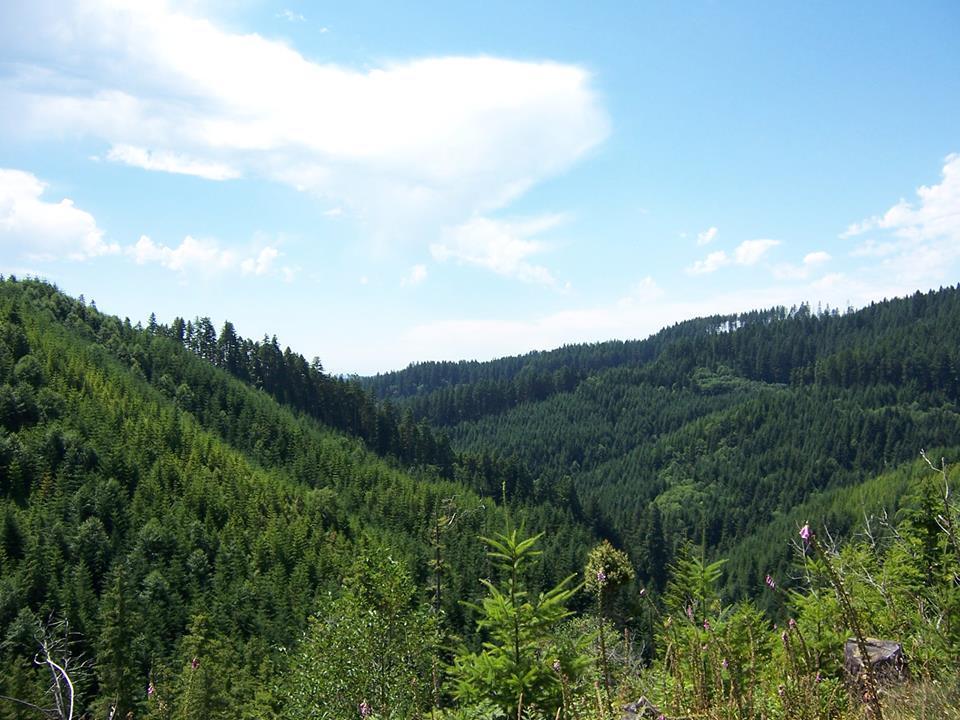By Craig Mackie
Recently, the Linn County jury determined that the State had indeed breached a long-standing contract with the 13 plaintiff forest trust counties. As Mr. Yamamoto wrote in his op/ed – What the Linn County Lawsuit Really Means: “The 1941 Forest Acquisition Act created the idea of Greatest Permanent Value (GPV) to mean managing these forest trust lands to return timber revenue to the Counties, taxing districts, and the Oregon Dept. of Forestry (ODF). It was in 1998 that the Board of Forestry decided to change the definition of GPV, and for the last 20 years, timber revenue suffered while the State instead prioritized going far above the mandates of the Federal Endangered Species Act and directing funds to increasing recreational opportunities.”
As noted, The Forest Acquisition Act was written in 1941, when the volume of logging was much less than it is today. By 1998, the logging in Federal lands was greatly reduced so that state and private lands had to pick up the slack. This was due to the NW Forest Plan being created in 1994. Before 1994, logging on federal lands was over 50% of the total timber production volume. Logging on state lands was less than 5%. After the NW Forest Plan, state and federal lands logging were at about 10% but private timber industry logging now rose to about 75% (U.S. Forest Service, Oregon Department of Forestry). The Oregon Department of Forestry had to change the view of its forests to help support the growing population of Oregonians who were moving here because of our beautiful state and the accessibility of outdoor recreation. This has become very apparent in the last decade in Tillamook County as evident in the number of people who come to the coast to fish, surf, crab, kayak, or just enjoy our beautiful coastal beaches.
I do not blame the counties for trying to get more money for their needed repairs. Hwy 101 is in need of constant attention because of the amount of traffic it receives. Bridges need to be replaced and as Mr. Yamamoto stated, we have 3500 culverts that need to be upgraded or replaced by bridges to improve fish passage. In North County, a culvert had to be lowered for Neahkahnie Creek that ran under Hwy 101. A very lengthy and, I assume, very expensive project. But as stated above, the state only logs less than 10% of our forests. Part of the revenue earned goes to run the department and the rest is divided amongst the counties. But what about the monies from the logging industry?
In 1995, the timber industry paid over $75 million dollars in taxes. By 2005, they had dropped to $10 million (Oregon Legislative Revenue Office). They currently pay $2.70 per acre harvesting tax. They pay no income tax. This harvesting tax goes to the Department of Forestry who turns around and supports the timber industry’s advertising. (There was a really well done three-fold brochure circulated recently about the merits of the timber industry.) Why the change? About this same time, timber companies decided to sell out to Wall Street. When a larger company buys a smaller one, they do it for a reason: more money for their shareholders. Also, about this time, I saw a dramatic increase in the amount of logging done in our county. The sides of the Neahkahnie range are now almost completely clear cut. The hills behind Wheeler the same. Rockaway has had almost all of their watershed cut.
As I said earlier, I am not against these counties wanting more money to improve the living condition of their residents or the fish that migrate up their streams. But I have to ask myself why haven’t the logging companies been asked to pay their fair share? I know that their corporate headquarters want a return on their investment, like we all do, but is it fair that all the money is taken away from the counties? I don’t mind paying my taxes because I know it funds all the services that provide me with a nice place to live. Why shouldn’t logging companies do the same? I don’t have a solution for this dilemma but I imagine if people put their heads together, something could be found. Maybe just asking the timber companies to start funding county projects, like replacing our culverts?
One more thing stands out in Mr. Yamamoto’s letter. He stated that the number of wood processing mills dropped from 360 in 1988 to 172 in 2017. I respond to this by first saying it is a sad fact of American capitalism right now. A Walmart, Costco, Home Depot goes in nearby and it has the effect of closing the smaller local stores. It is happening all over America. During the time that sawmills were closing, lumber production rose from 35 million board feet in 1990 to 90 mbf in 2016 (data from Western Wood Products Association.) Another thing I have observed in my time on the coast is the number of logs being shipped overseas. This also has grown immensely in just a short amount of time. I have always felt that this was a crime against our logging industry at home. Why take away a huge number of jobs from people who would have milled these logs to send the lumber overseas? Was this also caused by the corporate takeover of our lumber industry?
I don’t have any answers to this problem. What I think should happen is that we somehow work to negate the polarization of timber vs environmentalists, which is just a reflection of the polarization that is happening in the United States right now, to somehow meet in the middle so both sides win. As Mr. Yamamoto stated, it will be awhile as this case goes up through the courts, so might we use that time to find other solutions?


